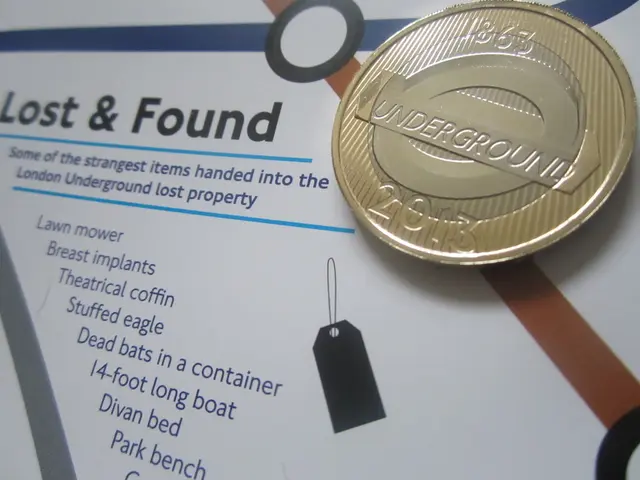Top 3 Puzzle Games: Uncovering Their Hooking Factors
Match 3 games have a secret ingredient that makes them super addictive, raking in more players, and boosting monetization while retaining the same core mechanics we're used to. At first glance, you might think it's the charming graphics that do the trick. But dig deeper, and you'll find that it's not just the spiffy artwork that keeps you glued to the screen. By exploring the dynamics of these games, we can see a pattern that relies not just on gameplay but also on the art and stories they spin. There's another layer at play here: a meta layer.
What's a Meta Layer and How Does it Work?
Meta layers are additional game content that dictates the core mechanics, drawing players into the Match 3 experience more deeply. Over the past few years, creators have been slapping on meta layers by combining fashion, design, construction, and storytelling—all wrapped in eye-catching visuals. This blend has catapulted multiple popular casual Match 3 games to the top of the charts. The evolution of match-three games has moved beyond just a puzzle – they're now a melange of strategy, creativity, and storytelling. So, let's dive in!
How do Meta Layers Work Their Magic?
Meta layers in casual games work brilliantly because they provide a fresh twist on a familiar core mechanic. With new match-three games hitting the market, developers are leveraging meta layers to toss in new gameplay elements and thematic depth. Casual gamers crave simple, accessible experiences, and there's nothing more familiar than the core mechanic they've encountered a dozen times. And on top of that, the meta layer adds that novelty that hooks them in. Meta layers appeal to players for various reasons:
- Expression: Meta layers give players opportunities to express themselves, such as choosing a character's appearance or customizing their home.
- Progression: Some games offer advancements beyond a simple level system – like progressively constructing or fixing something, or amassing collectibles.
- Storytelling: Some games include storytelling elements, which develop as the player progresses in the game.
Broadening the Player Base
Games that use meta layers attract a diverse range of players. For example, Gardenscapes, a Match 3 game on the surface but with an intricate narrative, construction, and expression meta-layer, might not catch the attention of a visual novel player. But the storytelling meta-layer, coupled with visually appealing artwork, might just entice them to give the game a try. On the flip side, since the game's mechanics are easy to grasp, players unfamiliar with Match 3 mechanics won't feel discouraged from joining in. This dynamic has been key to the success of the top-performing free match 3 games, where the value comes not just from easy-to-grasp gameplay but from engaging, immersive experiences that keep players coming back for more.
Meta Layers and Monetization
Some titles monetize the meta layer through in-game purchases that help players advance in the game. This approach has proven effective, allowing developers to generate revenue while simultaneously enhancing the gameplay experience. For example, in-game currency or boosts can be purchased to expedite construction projects or story progression. Even in games that don't monetize this way, players driven by the meta-layer may opt for power-ups to progress faster in the core gameplay, ultimately contributing to revenue.
The Power of Art in Match 3 Games and Their Meta-Layers
Games that successfully utilize meta-layers often boast stunning artwork. Construction and customization are inherently visual, with high-quality art playing a significant role in their addictive qualities. But even the storytelling aspect of meta-layers relies heavily on art—art that conveys emotion through expressive graphics, capturing the attention of casual gamers who tend to play in short bursts.
Case Study: Royal Match
In Royal Match, you become a royal architect, tasked with building a castle using Match 3 puzzles. The core mechanic is simple, but the meta layer of light construction adds a tangible feeling of progression, drawing in players who enjoy construction games. The captivating cartoonish art style and charming, light-hearted royal theme are what truly make this game shine, contributing significantly to its popularity.
Case Study 2: Gardenscapes
Gardenscapes is often credited with starting the current trend of meta-layers in Match 3 games. Like Royal Match, the core gameplay is simple Match 3 puzzles. The meta layer, however, is more complex: players take on the role of a mansion inheritor, helping the butler renovate an unkempt garden. Gameplay consists of solving puzzles to acquire in-game currency, which can be used to restore parts of the garden. The game has a strong storytelling aspect, peppered with numerous stories featuring various characters. Visually, Gardenscapes has an appealing cartoonish style, with a garden theme that extends to the puzzles themselves (fruits, leaves, garden objects). With an emphasis on in-app purchases, Gardenscapes has racked up impressive revenue, attracting both traditional Match 3 players and those who prefer visual novels and construction games.
Case Study 3: Merge Mansion
Successfully borrowing inspiration from Gardenscapes, Merge Mansion is another Match 3 game featuring an engaging narrative and meta-layer. The story follows Maddie, a young woman unraveling her grandmother's mysteries while repairing her mansion. Unlike other Match 3 games, core gameplay is directly tied to the story – players must merge items to create new ones in order to overcome obstacles in the narrative. The art is cartoonish and charming, making the game appealing to players. Monetization is achieved through in-app purchases, which accelerate gameplay and progress in both the Match 3 core gameplay and the story.
Wrapping it Up
We've seen that the core gameplay isn't the main component that makes Match 3 games shine today. It's the art, story, and a meta-layer that add unique gameplay experiences to the equation. The best match 3 games offer players a deeply satisfying puzzle-solving experience thanks to their harmonious blend of art, story, and core mechanics. While the core Match 3 gameplay can't change much from one title to another, the meta-layers allow developers to craft distinctive products that keep players engaged throughout their play sessions.
- The meta layers of match-three games, such as storytelling, construction, and customization, have led to an integration of technology in gaming, allowing players to interact with the gameworld in more meaningful ways.
- Aside from providing engaging gameplay, the visual aspect of these meta layers in games like Gardenscapes and Royal Match also plays a significant role in the lifestyle of casual gamers, offering them a break from reality with their vibrant, captivating art styles.








